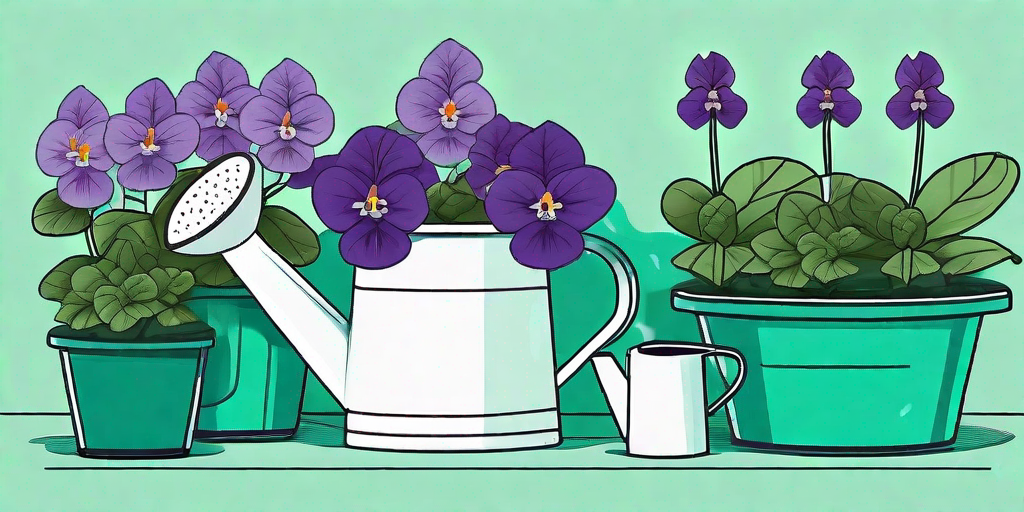
African violets, or Saintpaulias if you want to impress your botanist friends, are the divas of the indoor plant world. They're beautiful, they're vibrant, and they're just a little bit high maintenance. But don't let that deter you! With the right care, these floral beauties can thrive in your home, adding a splash of color to any room. The key to their heart? Watering. And not just any watering, but the right kind of watering. So, buckle up, plant lovers. We're about to dive into the world of African violet hydration.
Understanding Your African Violet's Thirst
Before we get to the watering part, it's important to understand why African violets are so particular about their H2O intake. These plants are native to Tanzania and Kenya, where they grow in the moist, shady understory of forests. This means they're used to a very specific kind of moisture: high humidity, but not a lot of direct water. So, when you're watering your African violet, you're trying to replicate this natural habitat.
Overwatering is a common mistake among African violet owners. These plants don't like to have wet feet, and too much water can lead to root rot, a nasty condition that can kill your plant. On the other hand, underwatering can cause the plant to wilt and the leaves to turn brown. It's a delicate balance, but with a little practice, you can become a master of African violet hydration.
The Art of Watering
The Right Water
Not all water is created equal, at least not in the eyes of an African violet. Tap water can contain chlorine and other chemicals that can harm your plant. Instead, use filtered or distilled water, which is free of these harmful substances. If you only have tap water available, let it sit out overnight to allow the chlorine to evaporate before using it.
Another important factor is the temperature of the water. African violets prefer room temperature water. Cold water can shock the plant's roots, while hot water can cause leaf spots. So, keep your water at a comfortable room temperature, just like you would for a pet goldfish.
The Right Technique
When it comes to watering African violets, technique is everything. These plants don't like to get their leaves wet, so avoid splashing water on the foliage. Instead, water the plant from the bottom. This can be done by filling the saucer under the pot with water and letting the plant soak it up. After about 30 minutes, dump out any remaining water to prevent the roots from becoming waterlogged.
How often should you water your African violet? That depends on the plant and the conditions in your home. As a general rule, water when the top inch of soil feels dry to the touch. In a dry, air-conditioned home, this might be once a week. In a humid environment, it could be less often.
Extra Tips for a Thriving Indoor Garden
Humidity
Remember how we said African violets come from a humid environment? That's something you'll want to replicate in your home. One way to do this is by placing a tray of water near your plant. As the water evaporates, it will increase the humidity in the air. Just make sure the plant isn't sitting in the water, as this can lead to root rot.
Another option is to use a humidifier. This can be especially helpful in dry climates or during the winter when indoor air tends to be dry. Just be sure to keep the humidity level below 50% to prevent mold growth.
Light
African violets need plenty of light to bloom, but they're not sun worshippers. Direct sunlight can scorch their leaves, so keep them in a spot with bright, indirect light. A north or east-facing window is ideal. If you don't have a suitable window, you can also use fluorescent lights. Just be sure to turn them off at night to give your plant a rest.
Rotate your plant every week or so to ensure all sides get equal exposure to light. This will help keep your African violet growing evenly.
Frequently Asked Questions
- Why are my African violet's leaves turning yellow?
This could be a sign of overwatering. Check the soil to see if it's waterlogged. If it is, let it dry out before watering again. If the problem persists, you may need to repot your plant in fresh soil.
- Why isn't my African violet blooming?
It could be that your plant isn't getting enough light. Try moving it to a brighter location. If that doesn't work, it might be time to fertilize. Use a fertilizer designed for African violets, and follow the package instructions carefully.
- Can I use tap water to water my African violet?
It's best to use filtered or distilled water, as tap water can contain chemicals that harm the plant. If you must use tap water, let it sit out overnight to allow the chlorine to evaporate.
So there you have it, the ins and outs of watering African violets. With a little practice and a lot of love, you can keep these indoor divas happy and healthy. Now go forth and hydrate!















